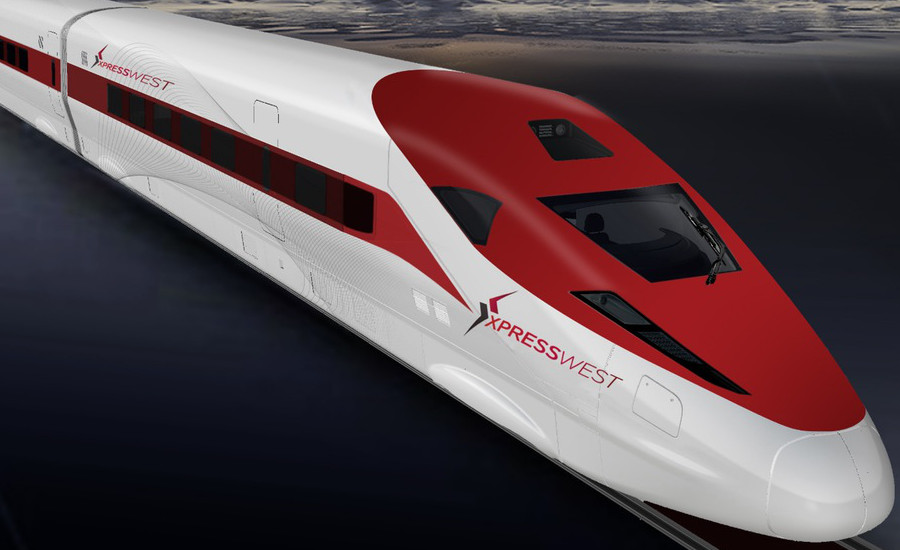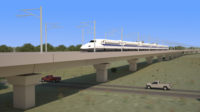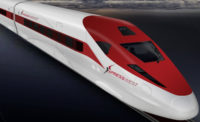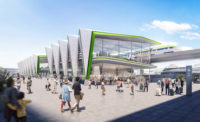Construction of a privately financed passenger rail connection between Southern California and Las Vegas will take place largely in the median of I-15, under a recently completed lease agreement between the California Dept. of Transportation and developers of the $4.8-billion privately financed XpressWest high-speed rail line.
The 50-year right-of-way use agreement, recently finalized following a mandatory 15-day public comment period, covers the 135-mile California section of the planned 170-mile corridor linking the town of Apple Valley in San Bernardino County with a station at a yet-to-be-announced location near the Las Vegas Strip. XpressWest, which will design, construct, operate and maintain the electric-powered train system, will pay annual rent of $842,000, an amount that will be adjusted according to changes in the consumer price index every three years. At the conclusion of the lease, XpressWest has the option to renew the agreement for an additional 49-year term.
For the railroad’s 35-mile section in Nevada, XpressWest is working with the Nevada Dept. of Transportation (NDOT) to finalize a right-of-way occupancy permit that allows the rail line to be constructed immediately adjacent to I-15.
XpressWest, which has pursued a SoCal-Vegas rail line for 15 years, was acquired in early 2019 by Brightline, which built and operates a three-station passenger rail system in between Miami and West Palm Beach.
The project still has some hurdles to clear before its planned December 2020 start of construction, however. A combined $4.2 billion in state and federal private activity bonding capacity hinges on a Federal Railroad Administration re-evaluation of XpressWest’s decade-old NEPA approval to determine potential environmental impacts of subsequent design changes, including relocation of the rail line to the highway’s median.
With operations scheduled to begin in mid-2023, XpressWest says the system will transport ten million passengers annually on trains capable of achieving speeds up to 200 mph. A single trip would take about 85 minutes.
XpressWest is already looking ahead to the project’s next phase, having recently signed an agreement with the San Bernardino County Transportation Authority to explore construction of a 50-mile spur with an undetermined number of stations through Cajon Pass into Rancho Cucamonga.





Post a comment to this article
Report Abusive Comment